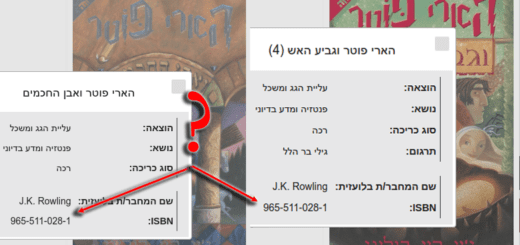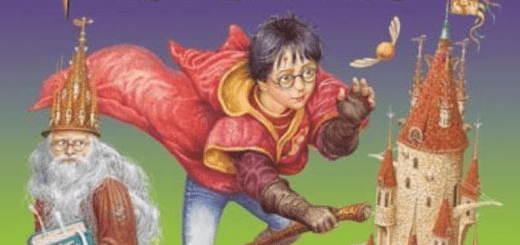 Serena Daniele Note on the Italian Translation
Serena Daniele Note on the Italian Translation
In 2002, the publisher of the Italian translation of Harry Potter and the Philosopher’s Stone, Salani, produced a special edition (HP1-ITA-ii-Tr1-00439) to celebrate their 140th Anniversary. This note was included in the front matter; the original text follows the translation below.
Author: Serena Daniele (editor)
Translation: Harrison Tu (AI Assisted)
Narration available:
NOTE ON THE ITALIAN TRANSLATION
Translating a book touches extremely sensitive chords in the hearts and minds of readers: it involves moving from one language to another while respecting its sounds and visions and preserving the evocative power of the words. In this sense, the Harry Potter series involved very delicate editorial choices.
In Harry Potter, the names of people or places almost always contain an allusion, a parody, or a play on words. Very often, the original English form has been retained because it is more evocative and immediate; other times, a translation was chosen that mirrored the meaning of the original or favored assonance; and still, in other cases, an interpretation was preferred that conveyed the comic, fairy-tale, or everyday nuance of the context.
For the names of the teachers, for example, the chosen approach prioritized adherence to the character of each individual (thus, the severity of Minerva McGonagall is filtered into the surname McGranitt, and the aura of superior wisdom of Albus Dumbledore is rendered in the surname Silente, which we felt was more authoritative than all the possible variations suggested by the original).
For the names of the Houses, the choice was based on linguistic rhythm and assonance, aiming to create a realm of fairy-tale everydayness that, not coincidentally, also belongs to the Italian tradition (if we consider the animal symbols of the Sienese districts, we notice that Grifondoro, Serpeverde, Tassorosso, and Corvonero instinctively sound familiar).
For the character of Rubeus Hagrid, Keeper of Keys and Grounds at Hogwarts, who in the original English speaks in a blatantly ungrammatical manner, the idea was to render this characterization in an equally ungrammatical Italian.
Finally, upon the release of Harry Potter and the Goblet of Fire, many readers were surprised to find one of the four Houses of Hogwarts renamed from Pecoranera to Corvonero. We had to choose a more literal translation due to the Hogwarts crest—which displays the symbols of the Houses (a lion, a serpent, a badger, and a bird of prey)—and which in later episodes of the series could play a role whose importance was difficult to predict.
Serena Daniele
Narration available:
NOTA ALLA TRADUZIONE ITALIANA
La traduzione di un libro tocca corde sensibilissime nel cuore e nella mente dei lettori: si tratta di passare da una lingua all’altra rispettandone suoni e visioni e mantenendo intatta la suggestione delle parole. In questo senso, la serie di Harry Potter ha comportato scelte editoriali molto delicate.
In Harry Potter i nomi di persone o di luoghi contengono quasi sempre un’allusione, una parodia, un gioco di parole. Molto spesso è stata mantenuta la forma inglese, perché più evocativa e immediata; altre volte si è scelta una traduzione che ricalcasse il significato dell’originale, o privilegiasse l’assonanza; altre ancora un’interpretazione che rendesse la suggestione comica o fiabesca o quotidiana del contesto.
Per i nomi degli insegnanti, ad esempio, la soluzione scelta ha privilegiato un’aderenza al carattere del personaggio (quindi la severità di Minerva McGonagall è filtrata nel cognome McGranitt e l’aura di superiore saggezza di Albus Dumbledore si è risolta nel cognome Silente che ci è sembrato più autorevole di tutte le variazioni possibili suggerite dal-l’originale).
Per i nomi delle Case, la scelta si è basata sul metro linguistico e sull’assonanza, cercando di creare un ambito di fiabesco quotidiano che non a caso appartiene anche alla tradizione italiana (se pensiamo agli animali-simbolo delle contrade senesi ci accorgiamo che Grifondoro, Serpeverde, Tassorosso e Corvonero ci suonano istintivamente cono-sciuti).
Per il personaggio di Rubeus Hagrid, Custode delle Chiavi e dei Luoghi a Hogwarts, che nell’originale inglese parla in modo palesemente sgrammaticato, si è pensato di rendere questa sua caratterizzazione con un italiano altrettanto sgrammaticato.
Infine, all’uscita di Harry Potter e il calice di fuoco, molti lettori sono rimasti sorpresi di trovare una delle quattro Case di Hogwarts ribattez zata da Pecoranera a Corvonero. Abbiamo dovuto scegliere di adottare una traduzione più letterale a causa dello stemma di Hogwarts, stemma che riporta i simboli delle Case (un leone, un serpente, un tasso e un rapace) e che negli episodi successivi della serie poteva giocare un ruolo di cui era difficile prevedere l’importanza.
Serena Daniele






